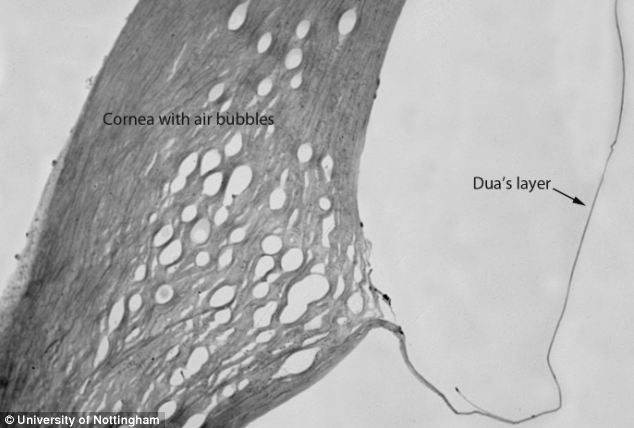Scientists at the United Kingdom’s University of Nottingham made a huge discovery recently, finding a new layer of the cornea. As Daily Mail reported, this is “a breakthrough experts say could ‘rewrite the ophthalmology textbooks,’” and “could help surgeons dramatically improve outcomes for patients undergoing corneal grafts and transplants.”
According to EyeWorld’s weekly email newsletter, the new layer of the cornea has been named “Dua’s layer,” after Harminder Dua, who made the discovery. Dua is a professor of ophthalmology and visual sciences at the University of Nottingham. The new layer is located at the back of the cornea, in between the corneal stroma and Descemet’s membrane, and is only about 15 microns thick, which could be the reason “nobody had ever spotted it” (MSN). Despite its thinness, Dua’s layer has shown to be quite tough, with the ability to withstand up to two bars of pressure (Medical News Today).
Dua and his colleagues discovered the new layer of the cornea by injecting air bubbles into eyes donated for research. The air bubbles were injected to separate various layers of the cornea. This allowed the scientists to scan the layers using an electron microscope in order to study the corneal layers magnified several thousand times larger than their actual size, leading them to find Dua’s layer.
Medical News Today reported that the scientists involved with this discovery “now believe that corneal hydrops, a bulging of the cornea caused by fluid build up that occurs in patients with keratoconus (conical deformity of the cornea), is caused by a tear in the Dua layer.”
Additionally, Dua shared in a statement “From a clinical perspective, there are many diseases that affect the back of the cornea, which clinicians across the world are already beginning to relate to the presence, absence or tear in this layer.”
This is exciting news for all eyecare practitioners! We would love to hear your thoughts on this new discovery, so please leave a comment below to share with us.
